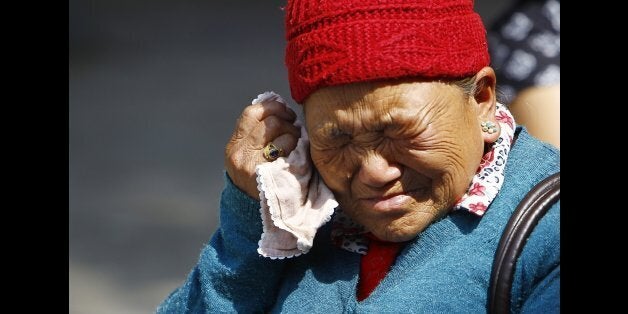
Climbing Mt. Everest is no longer a noble pursuit and the people who do it are not heroes. Everest has become a magnet not for the best among us expanding boundaries of the known world, but for the worst, the people with time and money to seek a personal challenge and examine their inner space at the risk of other peoples' lives. They are up there to put a checkmark on their bucket list. May on Everest, Christmas in Thailand.
It's been 90 years since the British climber George Mallory died trying to conquer Everest, "Because it's there." In his time, Mallory's quest was like putting a man on the moon. Back then you could only look up at a mountain like Everest. Now anyone can buy a plane ticket and look down.
Since Mallory, about 300 climbers have followed to their deaths. Today's climbers step over bodies left where they dropped, frozen in ice and their own ambition. The causes of death: falls, heart attacks, altitude sickness, avalanche, stroke, cerebral edema, and even a snowboarding accident. Marco Siffredi of France died trying to snowboard down Everest after making it to the top. No one is listed as having died of foolishness, although many should be.
Last Friday a chunk of ice the size of a building dropped into the Khumbu Icefall, a feature with pieces of ice like cargo containers standing on end waiting to tip. The resulting avalanche hit 25 climbers, killing 16 Sherpa climbing assistants without whom few white men would reach the top. It's the worst disaster in the history of the mountain.
Western guides have suspected for years that global warming is loosening the Khumbu, and still they sent in the Sherpas first to face the hardest work and danger. Those Sherpas killed in the avalanche were setting ropes and ladders to make it easy for the paying customers to follow. It's the mountaineering equivalent of "Tonto, go to town." Tonto always took a beating. For a few thousand dollars on an expedition, the Sherpas risk their lives and often lose them because it's one of the few good ways to make money in the mountains where they live.
Climbing Everest is deadly, but still safe enough for thousands of people to have made it to the top. They pay anywhere up to $90,000 for the tour. With no meaningful records left to set, now they try to be the youngest, the oldest, or the first from their country. Two years ago a man hauled his bicycle up the mountain because he takes it everywhere he goes.
The expeditions carry computers and communications gear so they can report the glory and travails of their climb. They don't talk much about the intra-expedition rivalries and "summit fever" in which partners, and sometimes guides, abandon fellow climbers to get to the top.
They don't dwell on environmental trashing of Everest. Sixty years of expeditions have left 50 tons of trash on the mountain; empty oxygen tanks, shredded tents, food containers, and assorted human detritus imported to one of the world's most remote and beautiful places.
It all happens on the backs of Sherpas. Edmund Hillary is credited with being the first man to the top in 1953, but the Sherpa Tenzing Norgay was right there with him. Following last week's accident the Sherpas are making demands. They want a $100,000 death benefit paid to their families if they die, and the same amount for a career-ending injury. The Nepalese government, which collects millions of dollars a year in climbing fees, has offered $400 for funeral costs. It's less than the cost of the boots they died in.
The Sherpas took a vote to go home in honor of their dead colleagues, which could end this year's season. NBC and Discovery cancelled a live special they intended to do in which a climber was going to fly off the summit in a wing suit. Several of the Sherpas who died in that avalanche were part of that effort. It seems terribly wrong that men should die for an athletic stunt to be watched on television thousands of miles away by Americans on their sofa.
On the website for Peak Freaks, a guide service that offers the option of a "personal sherpa," the guide Tim Rippel wrote, "We are not here to kill people." Maybe they should all consider the possibility that, yeah, really, they are.
Two years ago a 33-year-old Canadian woman died of altitude sickness after refusing to turn back at the danger hour of 2 p.m. Her last words were "save me," but it was too late to save her from her own judgment.
The list of dead gets longer every year, as do the lines of climbers, without any of them adding to the sum total of human knowledge, wisdom or dignity. This week there are about 400 climbers on Everest, and an equal number of Sherpas. On summit days, sometimes hundreds of climbers are lined up to use the ropes and ladders laid by the Sherpas. George Mallory died trying to go where no man had been. Today's Everest adventurers are just tourists following the crowd.